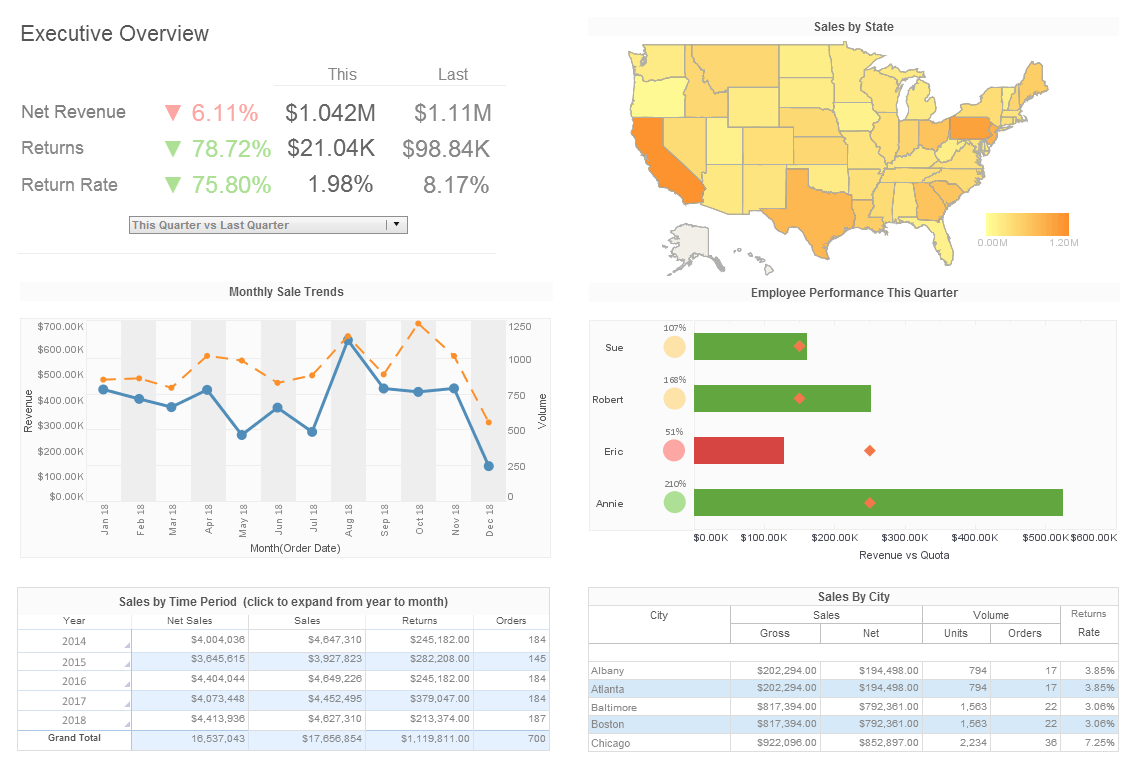Mobile Access to the Core Data
This is the continuation of the transcript of a Webinar hosted by InetSoft on the topic of "Improving Corporate Performance Management." The speaker is Abhishek Gupta, product manager at InetSoft.
So that’s where the first notion is, this transformative impact of consolidation. From a business information perspective, it’s also very relevant. So when you look at the notion that the primary driver that we have seen for driving mobile BI, for example, as investment, so this is mobile access to the core data that resides at the center of the heartbeat of the organization.
The primary driver is to drive decision making to the edges of the organization, well-informed decision making, decision making that has the necessary information required to be effective.
For example, if you are in field service, you have customer records. If you are in field sales, you have the access to customer relationship management and the order history. If you are in healthcare, you have medical records.
You could just go on and on with this, just think about how it empowers your organization to be more effective to drive the decision making power out to the edges of the organization that doesn’t in any way diminish the role of the CFO or the CXO generally. In fact, it empowers a greater level of operational efficiency.
| #1 Ranking: Read how InetSoft was rated #1 for user adoption in G2's user survey-based index | Read More |
Challenge of Employee Device Proliferation
Let’s change topics now to talk about challenges enterprises face nowadays. One of the biggest challenges we have seen is just the influx of consumer technology into the workplace and really mobile devices and cloud offerings have given the regular employee in an organization some more interest and engagement points around technology to the point where they are interested in what apps are available and what they can do with it.
They know there is more potential probably than what they are used to have, and so more than anything their expectations have expanded, and that’s really all outside of work, where those expectations have been crafted at this point. What they have kind of come to realize inside most of the organizations is that either for security reasons or for cost control reasons, there may be a single system that has been dictated by IT and designed by IT and for IT, not for the end user.
I always like to share this funny little comment here. This shows what feelings employees have in terms of technology they have for work and that they need to use their own personal technology. Yes, you have some data on the Web site, but the feeling is that the employees have better technology at home than they do at work. So because of that, they know that really they are going to be going outside the confines of IT, or they are may be even spend their own money or getting their line of business manager to actually put that into the budget because it’s something that actually helps that group.
It’s quick. It’s available immediately, and so because of that there’s a disconnect between IT and the business where you might not have tools that are actually working or being used by employees because they are using different ones that somebody has gotten on their own. You get some overlapping spends. You get some overlapping experience, too, in that one is for home, and it’s associated with work, but technically the company is still paying for and committed to it.
So we see a lot more of this pressure for IT and back office to really start connecting with the individual business unit. Actually the CFO is a great facilitator to connect those groups, really ask employees what they want, potentially find some cost savings if there are cheaper tools available. At least they can ensure that the BI solution is something that they are going to be using so you are not paying for something that nobody is going to use or hates to use.
We have actually seen is that between bring your own device trend for employees and the shadow IT or rogue IT, where essentially business units are going out and spending their own budget on different technology resources, what we find is that you end up getting inefficiencies. Potentially multiple BI tools were chosen to fill the same roles, or different licenses that are purchased on a single or smaller basis so you don’t necessarily get flexibility with discounts from collective negotiation there.
 |
View a 2-minute demonstration of InetSoft's easy, agile, and robust BI software. |
Dealing with Legacy BI
But the accounts and licenses might still be in existence. That maintenance overhead already exists for IT. What kind of the traditional technologies are out there? What you get is really this very difficult system of BI applications to manage, and you are paying even either double or triple what you should be based on just having the two similar systems in place or not having the negotiation flexibility for discounts.
That’s really a huge issue kind of going on right now. If you lose a lot of control that way, you also lose a lot of intelligence. If somebody is going out and just getting an app from the app store or they are only getting to meet their own needs, you may not be getting the same analytics that might be valuable to other parts of the organization.
For instance, the financial group running under the CFO might not be getting to use these BI tools. So there is a big-big challenge in terms of insight and additional risk but also just what’s being spent on it and then the lack of consolidation.
| Previous: Improving Corporate Performance Management |


